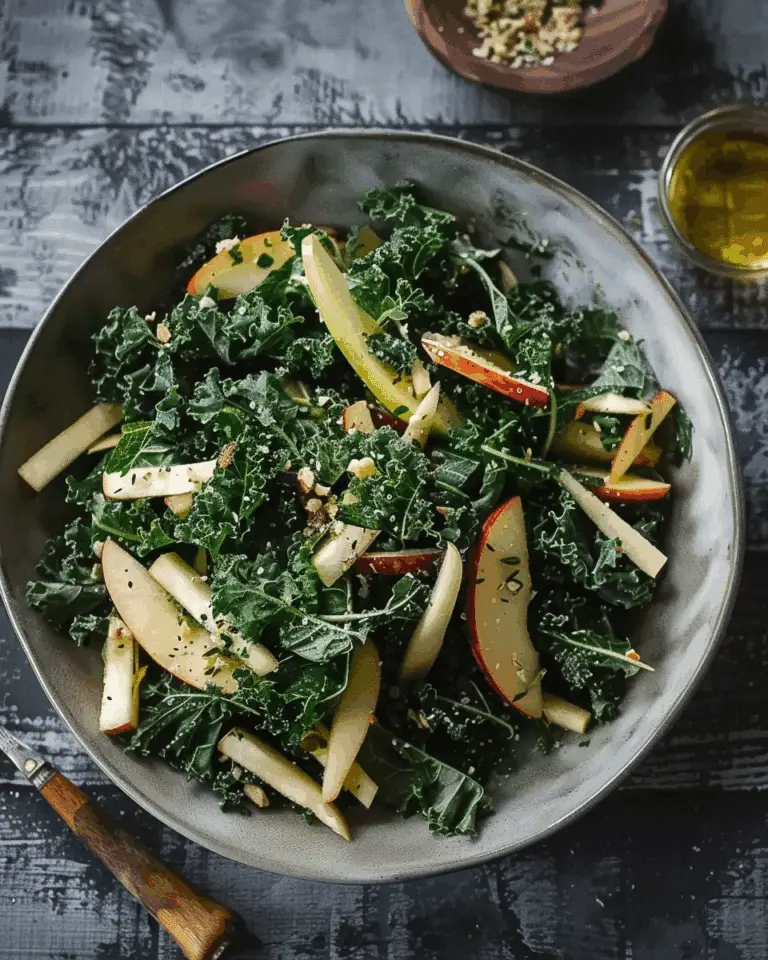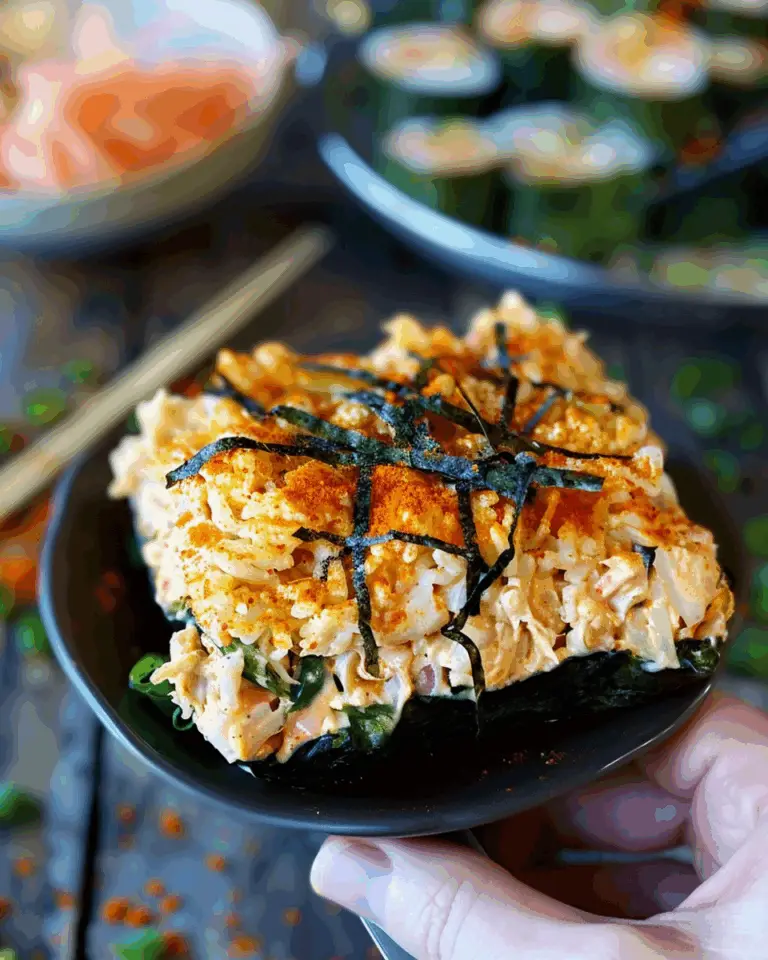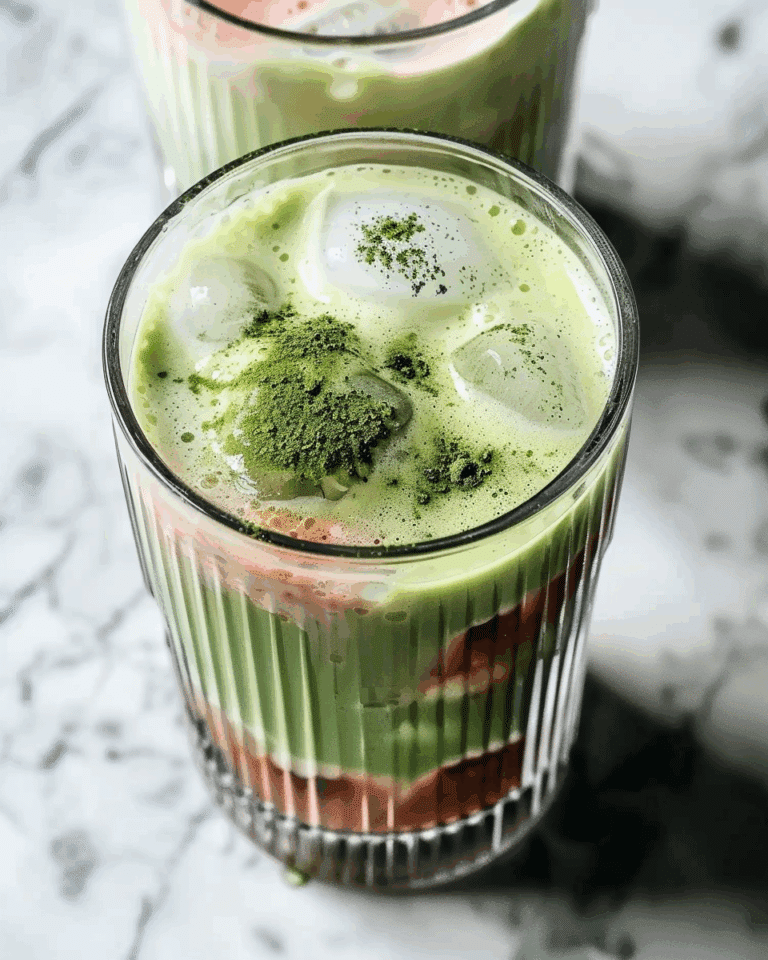If you are craving a meal that combines bold Korean flavors with comforting noodles, you absolutely must try this 20 Minute Korean Beef Sesame Noodles Recipe. It’s a vibrant dish bursting with savory-sweet sauce, tender beef, fresh vegetables, and those irresistible toasted sesame notes. The best part is how quickly it comes together, making it perfect for busy weeknights when you want something impressive yet fuss-free. This recipe effortlessly balances hearty, spicy, and fresh elements into one satisfying bowl that will have you coming back for seconds in no time.
Ingredients You’ll Need
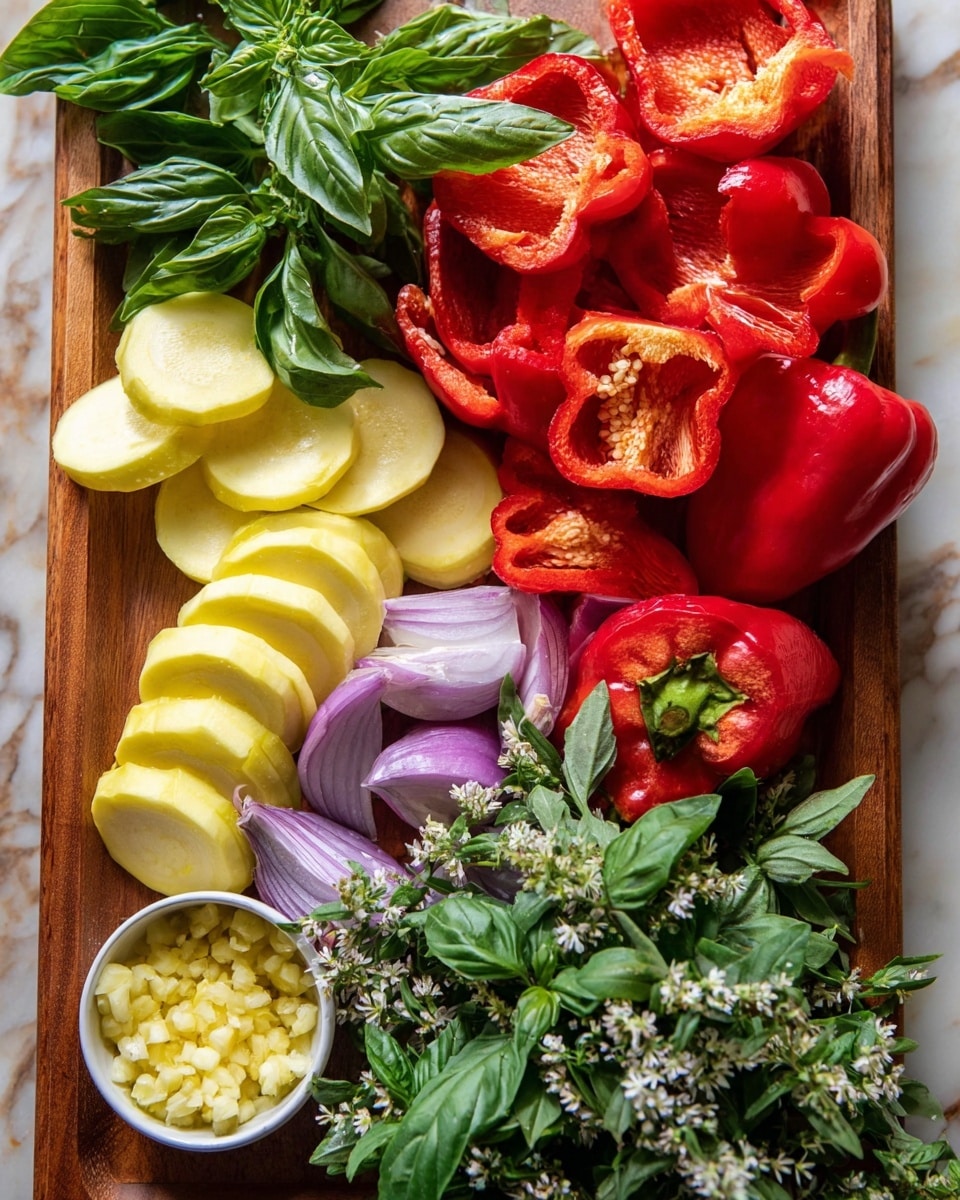
Every ingredient in this recipe plays a vital role in delivering an authentic and mouthwatering Korean-inspired noodle dish. From the rich depth of tamari to the zing of fresh ginger, each element enhances the taste, texture, and overall appeal without overwhelming the senses.
- 4 cloves garlic, chopped: Adds a punch of aromatic, savory flavor that is essential in Korean dishes.
- 1 tablespoon chopped fresh ginger: Offers a bright, spicy note that wakes up the sauce beautifully.
- 1/2 cup tamari or soy sauce: Provides a salty, umami-rich base that ties the sauce together.
- 1/4 cup honey: Balances the saltiness with a gentle sweetness for a harmonious flavor.
- 2 tablespoons rice vinegar: Brings acidity that lifts and freshens every bite.
- 2-3 tablespoons Gochujang (Korean chili paste): Delivers the signature spicy kick with a subtle smoky sweetness.
- 1 tablespoon toasted sesame oil: Infuses the dish with warm, nutty depth essential to Korean cuisine.
- 8 ounces brown rice noodles: Provides wholesome, chewy noodles that soak up the sauce perfectly.
- 2 tablespoons sesame oil: Used for stir-frying vegetables and meat, adding extra toasted sesame flavor.
- 3 cups mixed stir fry vegetables: Adds vibrant color, freshness, and satisfying crunch.
- 3 shallots, sliced: Brings a sweet, mild onion flavor that caramelizes beautifully.
- 1 pound flank steak or chicken breast, sliced thin: The tender protein that soaks up the sauce and adds substance.
- 1/4 cup toasted sesame seeds: Sprinkled on top for extra crunch and a hint of nuttiness.
- 1/2 cup fresh basil: Offers bright herbal freshness that balances the rich beef and sauce.
How to Make 20 Minute Korean Beef Sesame Noodles Recipe
Step 1: Prepare the Sauce
Start by combining garlic, fresh ginger, tamari, honey, rice vinegar, Gochujang, and toasted sesame oil in a glass jar or bowl. Whisk or shake everything until perfectly blended. This sauce is the soul of the dish, melding spicy, sweet, and umami flavors that will coat your noodles and beef with incredible taste.
Step 2: Cook the Noodles
Follow the package directions for your brown rice noodles. Once cooked to al dente, drain and rinse them under cold water. Rinsing stops them from overcooking and keeps the noodles from sticking together, ensuring a perfect texture in the final dish.
Step 3: Stir Fry the Vegetables
Heat 1 tablespoon of sesame oil in a large skillet on high heat. Add your mixed vegetables and cook quickly until just wilted—about 2 to 3 minutes. Toss in 2 tablespoons of the prepared sauce and stir until the veggies are nicely coated and flavorful. Then remove them from the pan to keep them fresh and crisp for later.
Step 4: Cook the Shallots and Beef
In the same skillet, add the remaining 1 tablespoon of sesame oil. Add the sliced shallots and cook for 2 minutes until they become deeply softened and fragrant. Arrange the thinly sliced beef in the pan without stirring and let it sear for 2 minutes to develop a nice crust. Then toss the meat, pour in the rest of the sauce, and let it simmer for about 1 minute to absorb those flavors.
Step 5: Combine Noodles, Vegetables, and Beef
Return the cooked vegetables to the skillet along with the noodles. Stir everything together and cook for an additional 2 to 3 minutes to ensure the sauce thoroughly coats each strand of noodle and piece of beef. This is when the dish reaches its full flavor potential and the noodles soak up all that delicious sauce.
Step 6: Add Fresh Finishing Touches
Remove the skillet from the heat and gently fold in the fresh basil and toasted sesame seeds. These final touches introduce bright color, fresh herbal notes, and satisfying crunch, transforming this dish from a quick meal to a stunningly flavorful experience.
How to Serve 20 Minute Korean Beef Sesame Noodles Recipe
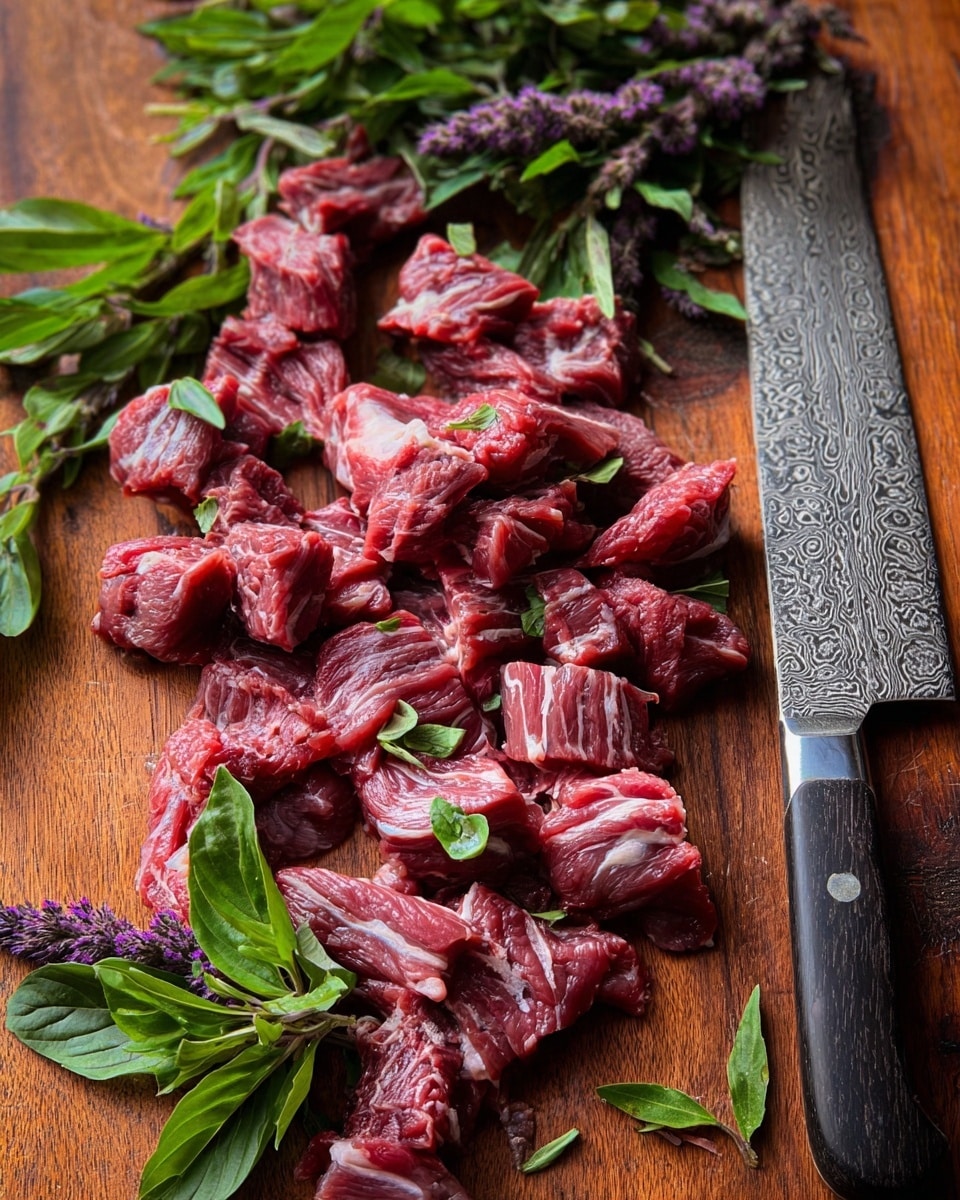
Garnishes
Fresh garnishes bring life to this already-delicious dish. Sprinkle additional toasted sesame seeds for texture and visual appeal. Adding a handful of chopped scallions or a few sprigs of cilantro can brighten the flavors even more. If you love chili, a dash of sliced fresh chili peppers or a drizzle of extra Gochujang makes for an exciting spicy kick.
Side Dishes
This Korean beef sesame noodles recipe pairs wonderfully with simple side dishes that complement its rich flavors. Light cucumber kimchi or a quick pickled radish salad adds crunch and tang. A bowl of steamed jasmine rice or sticky rice on the side can soak up any extra sauce, making every bite delightful. For a heartier meal, a warm miso soup or a fresh Korean spinach salad rounds out the plate beautifully.
Creative Ways to Present
For casual dining, serve the noodles in large bowls topped with sesame seeds and basil, letting everyone dig in. For a more elegant presentation, nestle the noodles onto a plate and fan thin slices of beef on top, garnished with microgreens and a small drizzle of toasted sesame oil. You can also serve this dish in lettuce wraps for a fun, hand-held option. Either way, it’s as visually appealing as it is delicious.
Make Ahead and Storage
Storing Leftovers
Leftover Korean beef sesame noodles can be stored in an airtight container in the refrigerator for up to 3 days. To maintain the best texture, keep the sauce and noodles mixed so the flavors continue to meld. If you expect to have leftovers, you might want to undercook the noodles slightly when making the dish to avoid sogginess during reheating.
Freezing
Freezing this dish is possible but not ideal because the noodles might become a bit mushy upon thawing. If you decide to freeze it, store the beef, vegetables, and sauce separately from the noodles. Freeze in airtight containers or freezer bags for up to 1 month. Thaw overnight in the fridge before reheating gently on the stove.
Reheating
Reheat leftovers in a skillet over medium heat, adding a splash of water or extra sauce to loosen the noodles if needed. Stir frequently to heat evenly and prevent sticking. Avoid microwaving if possible to preserve the noodles’ texture and overall dish quality. Fresh basil can be added after reheating for a burst of flavor and freshness.
FAQs
Can I use chicken instead of beef in this recipe?
Yes! This 20 Minute Korean Beef Sesame Noodles Recipe is versatile. Thinly sliced chicken breast works wonderfully and cooks quickly, absorbing the sauce just as well as beef does.
What is Gochujang, and can I substitute it?
Gochujang is a Korean chili paste that adds sweetness, spice, and umami. If you can’t find it, you can substitute with a mix of chili paste and a bit of miso paste, or use sambal oelek for a similar heat profile without the sweetness.
Are brown rice noodles necessary, or can I use other noodles?
You can definitely swap the brown rice noodles for any noodle you prefer, like soba noodles, rice vermicelli, or even spaghetti in a pinch. Just adjust cooking times according to the noodle type.
How spicy is this dish?
The spice level depends on how much Gochujang you add. Using 2 tablespoons yields a mild to medium heat; increasing to 3 tablespoons heats things up nicely. You can adjust the spice to suit your palate.
Can I make this recipe vegetarian or vegan?
Absolutely! Replace the beef with tofu or tempeh and use tamari or soy sauce instead of fish sauce. Load up on vegetables for texture, and you’ll have a delicious plant-based version of this 20 Minute Korean Beef Sesame Noodles Recipe.
Final Thoughts
I wholeheartedly encourage you to try the 20 Minute Korean Beef Sesame Noodles Recipe the next time you want a quick yet unforgettable meal. It’s a fantastic way to fill your kitchen with the irresistible aromas of Korean cooking without spending hours in front of the stove. With its balance of spicy, sweet, and savory flavors, combined with fresh herbs and crunchy sesame seeds, this recipe will quickly become a beloved staple in your weeknight dinner rotation.
Print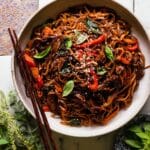
20 Minute Korean Beef Sesame Noodles Recipe
- Total Time: 25 minutes
- Yield: 4 servings
Description
A quick and flavorful Korean-inspired dish featuring tender flank steak, brown rice noodles, and vibrant stir-fry vegetables tossed in a savory, slightly spicy sesame sauce. Ready in just 25 minutes, perfect for a satisfying weeknight meal.
Ingredients
SAUCE
- 4 cloves garlic, chopped
- 1 tablespoon chopped fresh ginger
- 1/2 cup tamari or soy sauce
- 1/4 cup honey
- 2 tablespoons rice vinegar
- 2–3 tablespoons Gochujang (Korean chili paste)
- 1 tablespoon toasted sesame oil
STIR FRY
- 8 ounces brown rice noodles
- 2 tablespoons sesame oil
- 3 cups mixed stir fry vegetables
- 3 shallots, sliced
- 1 pound flank steak or chicken breast, sliced thin
- 1/4 cup toasted sesame seeds
- 1/2 cup fresh basil
Instructions
- Make the Sauce: Combine all sauce ingredients—garlic, ginger, tamari or soy sauce, honey, rice vinegar, Gochujang, and toasted sesame oil—in a glass jar. Shake or whisk thoroughly until the mixture is well blended.
- Cook Noodles: Prepare the brown rice noodles according to the package instructions. Once cooked, drain them well and rinse under cold water to stop the cooking process and prevent sticking.
- Cook Vegetables: Heat 1 tablespoon of sesame oil in a large skillet over high heat. Add the mixed stir-fry vegetables and cook for 2-3 minutes until they begin to wilt. Pour in 2 tablespoons of the prepared sauce and stir to coat the vegetables evenly. Once coated, remove the vegetables from the skillet and set aside.
- Sauté Shallots and Beef: In the same skillet, add the remaining 1 tablespoon of sesame oil. Add the sliced shallots and cook for 2 minutes until they become deeply softened. Add the thinly sliced flank steak and cook without stirring for 2 minutes to sear the meat. Toss the beef to brown evenly, then pour in the remaining sauce. Let it simmer for 1 minute to absorb flavors.
- Combine and Finish: Stir in the cooked noodles and the previously cooked vegetables into the skillet. Cook together for 2-3 minutes, allowing the sauce to evenly coat the noodles and ingredients. Remove from heat, then stir in the fresh basil leaves and toasted sesame seeds. Serve immediately, garnished with additional fresh basil if desired.
Notes
- For a milder dish, reduce the amount of Gochujang or omit it entirely.
- You can substitute flank steak with chicken breast or tofu for a different protein option.
- Use gluten-free tamari for a gluten-free version of this recipe.
- Make sure to rinse noodles after cooking to prevent them from sticking together in the stir fry.
- Feel free to add more vegetables like bell peppers, snap peas, or carrots based on your preference.
- Prep Time: 15 minutes
- Cook Time: 10 minutes
- Category: Main Course
- Method: Stovetop
- Cuisine: Korean


